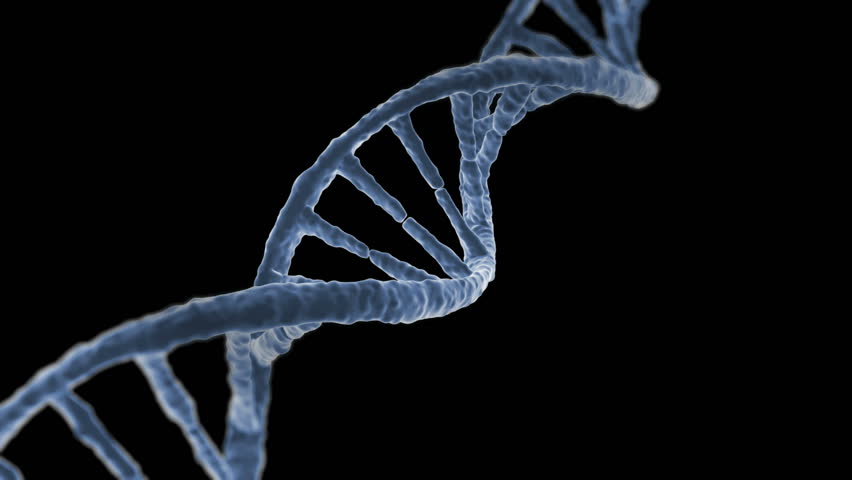In 1866, Gregor Mendel, the father of modern genetics, discovered that traits were inherited and passed on to generations through genes. However, Mendel did not know what the genes were composed of or what allowed the traits to be passed on. In the late 1940s, Francis Crick, one of the two researchers who would soon discover the key component of life, began his work performing X-ray crystallography at the University of Cambridge. X-ray crystallography uses X-ray diffraction to study crystals and their structures. It was his ambition to learn the art of X-ray crystallography in order to study the structure of protein, which are large macromolecules responsible for catalyzing reactions, DNA replication, and transporting molecules throughout the cell, for in it surely lay the secret of life itself.1 During this time, other researchers were trying to find the stable conformation, or structure, of amino acid chains in protein, which was soon discovered by Linus Pauling, who would be Watson and Crick’s rival in finding the DNA structure. This structure was proven to be the alpha helix, the most stable conformation of amino acid chains in protein. Crick then witnessed the errors the researchers had made when determining the structure of the alpha helix. One of the errors he noticed, which he would later apply to his research of the DNA structure, the major component of life that carries genetic information, was the inflexibility of the double bonds on molecular structures.

By the early 1950s, in the Cavendish Laboratory at the University of Cambridge, Crick began his research on the DNA structure with James Watson, who shared the same interest as Crick in genetics and studying the structure of DNA. They discussed and tried to determine the structure of DNA. During this time, Maurice Wilkins and Rosalind Franklin, researchers from Kings College in London, obtained images from the X-ray diffraction they performed on DNA fibers. Franklin’s X-ray photographs had established unequivocally the structure of DNA.2 Wilkins soon shared their findings with Watson and Crick. Watson and Crick began to fear that Linus Pauling, who recently discovered the protein alpha helix, might be ahead in finding the structure of DNA. However, Pauling lacked the luxury of being able to give DNA his undivided attention.3 The major setback for Pauling was having his travel restricted by the United States because he was suspected to be a communist during the Red Scare of McCarthyism. After hearing this, Watson and Crick felt relieved that Pauling would not be the first to discover the DNA structure. They soon began to work with Wilkins in determining the structure of DNA by analyzing the X-ray images Franklin took. However, they found some faults in her findings after analyzing Franklin’s report. Specifically, Watson and Crick found that she stated that the helical structure was not the only possible structure of DNA.

After looking through Franklin’s data, Watson and Crick were able to find that the DNA structure was a double helix with antiparallel strands, which meant that the strands ran in opposite directions. By discovering the DNA strand directions, they just needed to find the appropriate DNA base pairings, which are nucleotides, commonly referred to as bases, that are able to bond with one other nucleotides. In order to do this, they relied on the Chargaff rule, which had been proposed by Erwin Chargaff. The Chargaff rule states that the amount of guanine has to be equal to the amount of cytosine and the amount of adenine has to be equal to the amount of thymine, which allowed them to find that the base parings were adenine-thymine and cytosine-guanine. Once Watson and Crick applied the Chargaff rule to their research, they determined that the base pairs were held together by hydrogen bonds. Watson and Crick made their discovery that the DNA was a double helix, and they constructed their model on February 28, 1953. They finally published their research on April 25, 1953, in the science journal Nature. The Nature paper specified the critical dimensions of their double helix model, such as helical pitch, cylinder diameter, and the number of returns between repeats along the helix.4

In 1962, Crick, Watson, and Wilkins received the Nobel Prize in Physiology or Medicine. After their discovery of the DNA double helix, the understanding of life began to change. Most diseases, like Alzheimer’s and melanoma, occur because of DNA damage. By understanding that the cause of the disease is due to DNA damage, cures can be customized toward repair of the affected area. In addition to DNA repair, cells are able to repair the damage in DNA with different repair systems, like nucleotide excision repair (NER). NER repairs the DNA by removing the damaged section of DNA and replacing it with new DNA.5 Since each person’s DNA is distinct, investigators can pinpoint the culprit behind a crime. They can determine who the culprit is in a crime by comparing the DNA left behind at the scene of the crime and the DNA of the person who is suspected of the crime. By knowing the structure of DNA, Darwin’s theory of evolution can be proven since DNA is passed on from organisms from the same species, which would mean that plant and animal species descended from a common ancestor. Watson and Crick set the precedent by discovering the structure of DNA. Their discovery had revolutionized science and furthered research into DNA.
- Robert C. Olby, Crick, Francis Harry Compton (Detroit: Charles Scribner’s Sons, 2008), 207. ↵
- Sarah Rapoport, “Rosalind Franklin: Unsung Hero of the DNA Revolution,” The History Teacher no. 1 (2002): 116. ↵
- Kersten T. Hall, The Man in the Monkeynut Coat: William Astbury and the Forgotten Road to the Double-Helix (Oxford: OUP Oxford, 2014), 164. ↵
- Ruth Hubbard, “Rosalind Franklin and DNA,” Signs no. 1 (1976): 229-37. ↵
- Bruce Alberts, et al., Essential Cell Biology (New York: Garland Science, 2013), 213-214. ↵



19 comments
Andres Cano
It amazes me that we know so much about DNA today. It took millennia for science to develop in a way that explains all large- scale natural phenomena, but until Watson and Crick we were never able to describe some of the most essential and small scale- phenomena. Learning of the DNA structure allowed us to pinpoint DNA processes that allow us to advance in technology and awareness of certain diseases and malfunctions that occur in the DNA replication process and beyond. Super cool.
Mariah Garcia
The discovery of DNA would not have been possible without Rosalind Franklin foundational help. However, Watson and Crick were able to “crack” the genetic code and protein synthesis. It is amazing to know how the double helix is what paves the path for basically everything in science. It paved the path for finding loved ones, catching the criminal, and today helping find cures. Our DNA is so small yet so complex and fragile that it is surprising how it self replicates and makes up who we are and how we look.
Micaela Cruz
I had heard of Mendel previously but never was I aware of the contributions made by Watson and Crick. It’s fascinating to learn about the work they had done, discovering how the shape of DNA was not only helical but a double helix structure. I find this to be a well-written descriptive article because of the author’s ability to describe in-depth the work and accomplishments made by both individuals, along with help from Rosalind Franklin. And the fact that she was a woman, that’s admirable.
Christopher Hohman
Nice article. Watson and Crick’s discovery certainly revolutionized the science and medical fields. It is amazing to thing that DNA is so complex. Yet it is so small at the same time. It is also incredible that DNA helps determine who we are. Like what we look like and maybe even whether or not we have inherited certain diseases. It sure is a powerful component of our life. It is sad though that disease can be caused by DNA as well. But if we know it is caused by DNA then we are one step closer to finding a cure
Jose Fernandez
I don’t particularly enjoy reading about science, but I think this article is very interesting. I knew some things about DNA because of school, but I didn’t know about how it was discovered. I think this was a huge discovery in the history of human kind and it is important to know about it. I think the article is very well written and structured.
Robert Freise
The discovery that Watson and Crick did on the structure of DNA revolutionized the scientific community as a whole and it helped the way medical examiners and surgeons diagnosed patients based on the new discovered DNA structure, this discovery also helped people find lost loved ones , and it helped the development of how to catch criminals. This article informed the reader on how important the the discovery of the double helix within the DNA that is a code for every living thing on the planet.
William Rittenhouse
It is interesting of how recent the discovery of the double helix was and how many mistakes were made at first in picturing it. None of these discoveries could have been made without the advancement of technology. It is cool how big of an impact technology can make on research. As technology advances I’m sure that there will continue to be new discoveries, but also more in depth research of things we already know such as the double helix and DNA.
Katherine Watson
For my core Nature class, we are currently talking about what makes the human body function properly, questioning the process of the scientific method and how our knowledge of the human body came to be. In our studies, Watson and Crick are mentioned as they are the said founders of the DNA double helix strand, but this article goes more in depth as to how their research was conducted, going beyond what we discussed in class. It also makes me very proud of my heritage because I am a Watson girl myself. I would prefer people to think of this Watson when they say my last name, rather than the sidekick to Sherlock Holmes,
Harashang Gajjar
The discovery in 1953 of the double helix, the twisted-ladder structure of deoxyribonucleic acid (DNA), by James Watson and Francis Crick marked a milestone in the history of science and gave rise to modern molecular biology, which is largely concerned with understanding how genes control the chemical processes within cells. In short order, their discovery yielded ground-breaking insights into the genetic code and protein synthesis. During the 1970s and 1980s, it helped to produce new and powerful scientific techniques, specifically recombinant DNA research, genetic engineering, rapid gene sequencing, and monoclonal antibodies, techniques on which today’s multi-billion dollar biotechnology industry is founded. Major current advances in science, namely genetic fingerprinting and modern forensics, the mapping of the human genome, and the promise, yet unfulfilled, of gene therapy, all have their origins in Watson and Crick’s inspired work. The double helix has not only reshaped biology, it has become a cultural icon, represented in sculpture, visual art, jewelry, and toys.
Sebastian Carnero
Very Interesting. Watson and Crick could get ahead of Pauling because of communist suspicions about him. It’s amazing how they could discover that can help greatly the criminal investigations and medicine by analysis of a photograph and connecting theories. Trying to explain what surrounds us is the first step in the search of what’s true. It is also interesting how researchers are not only focused on what they have to observe, but on who may get to obtain the answer faster.